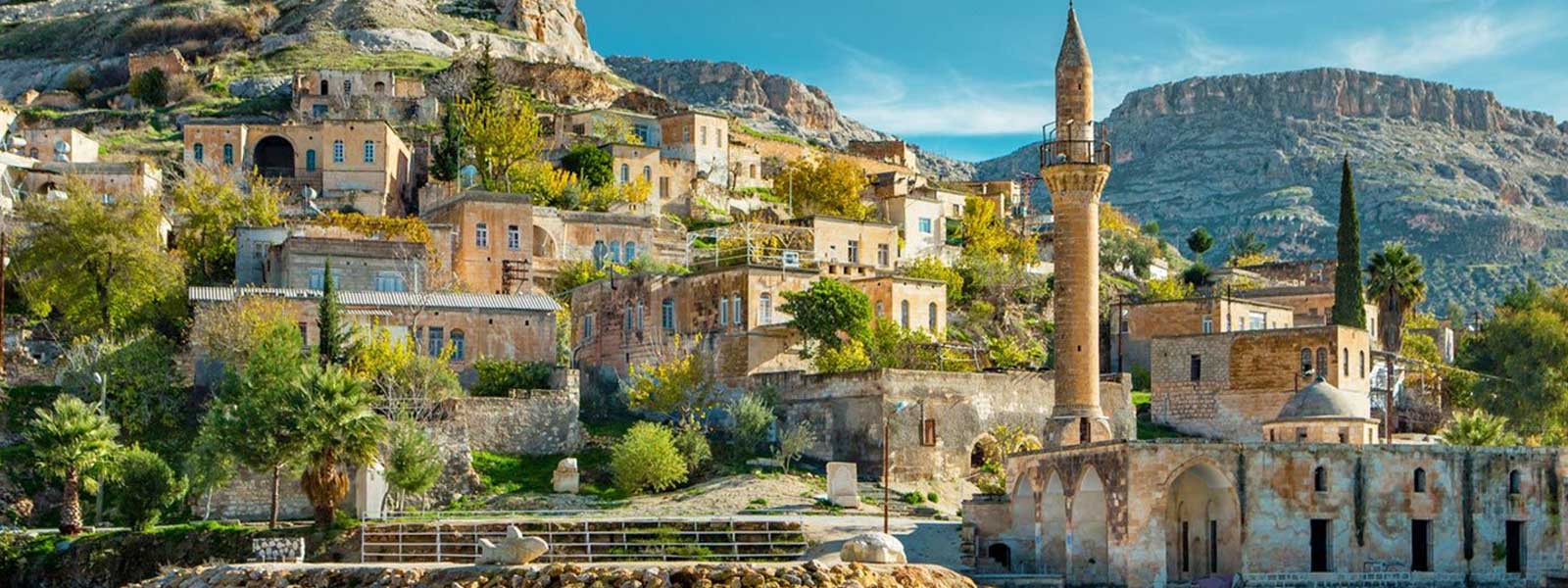
GAZIANTEP
In the 1st and 2nd centuries AD Roman art reached its zenith, and Zeugma, one of the four principal cities of the Kingdom of Commagene, came under Roman rule in 72 AD, entering a period of prosperity and peace. Artists who came here from the four corners of the empire produced exuberant works of art to adorn this lovely city. Pebbles of every color and shade were gathered from the bed of the Euphrates and used to make mosaics in which every tone of the six principal colors convey light and shade with such subtlety that the figures seem vibrant with life. From these pebbles, worn smooth by the cool waters of Euphrates, were created pictures of gods, goddesses, and mythological scenes. A mosaic pavement found in one of the hillside villas in Zeugma depicts Oceanus, the god of the great stream thought to encircle the world and father of all rivers, and his wife Tethys, who symbolized the abundance of the sea. One of their sons was the Euphrates, who created the Tigris and the land of Mesopotamia between these two rivers.
Along the banks of the Euphrates, gardens and orchard flourished even in the blazing heat of summer, and fish species unique to the river inhabited its waters. The Euphrates, which rises on the high plateaus to the north of Zeugma, has given birth to a succession of civilizations, nourished them with its flora and fauna, and brought them prosperity since prehistoric times. The Euphrates flows to the east of the Turkish city of Gaziantep, which lies at the center of the area of Upper Mesopotamia known as the Fertile Crescent. In the Middle Paleolithic Age, when the Neanderthal man was spreading around the world, the conducive conditions here made the city an important center of human settlement. In the area stretching westwards from the banks of the Euphrates to Islahiye Plain are the traces of many civilizations, including the renowned archaeological sites of Kargamis, Zincirli, Tilmen Hoyuk, and Sakcagozu.



Duluk, a village 10 kilometers north of Gaziantep that has been inhabited since Paleolithic times, was an important sanctuary under the Hittites, with a temple dedicated to Tesup, the god of storms, and equally important as a commercial center for caravans traveling from Mesopotamia via the Euphrates into Anatolia. In the Hellenistic period, the Mithraic faith won many followers in Anatolia, and the largest underground temples in the world are located here. Rumkale, situated 62 kilometers east of Gaziantep at the confluence of the Merzimen and Euphrates rivers, is a natural fortress in the form of a peninsula with sheer cliffs. The ruins perched above are visible from the opposite shore. This, the ancient Hromgla, is thought to be the place referred to as Sitamrat which the Assyrian king Salmanassar III conquered in 855 BC. In the 11th century, Rumkale was a principal stronghold of the crusader earldom of Urfa and was held at various times by the Armenians, Syrians, Franks, Mamluks, and Ottomans.
The most fascinating of the late Roman and medieval remains here is a cylindrical ventilation shaft belonging to a well which descends below the level of the Euphrates itself. It was at Rumkale that St John inscribed his gospel where the place itself has been ruled by the Hittites, Assyrians, Romans, Byzantines, Arabs, Seljuks and Ottomans. On the hilltop above the town is a castle, around which the hans where merchants conducted business and the bazaars where you can still buy local cheeses, herbs, copperware, and many other traditional goods huddled for protection. The streets of this old quarter are narrow to provide shade in the long hot summers. Behind the high walls lining them are courtyards and traditional stone houses. Numerous historic mosques and churches are to be seen around the city. One of the most astounding sights in the province are the over 200 unfinished basalt statues at the village of Yesemek near the town of Islahiye west of Gaziantep.
The quarry here was the largest in the Near East from the last quarter of the second millennium until the 8th century BC. The Assyrians carried the sculptors back to Assyria, putting an end to work in the sculpture workshop, and time has stood still here since the moment it was abandoned. It is as if the sculptors left their winged lions, mountain gods, and sphinxes to guard over their homeland in their absence.
